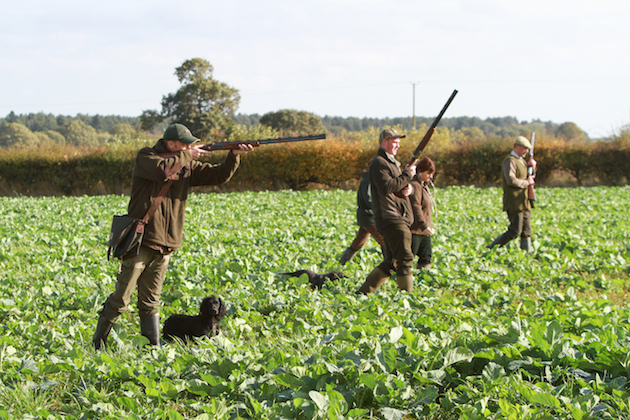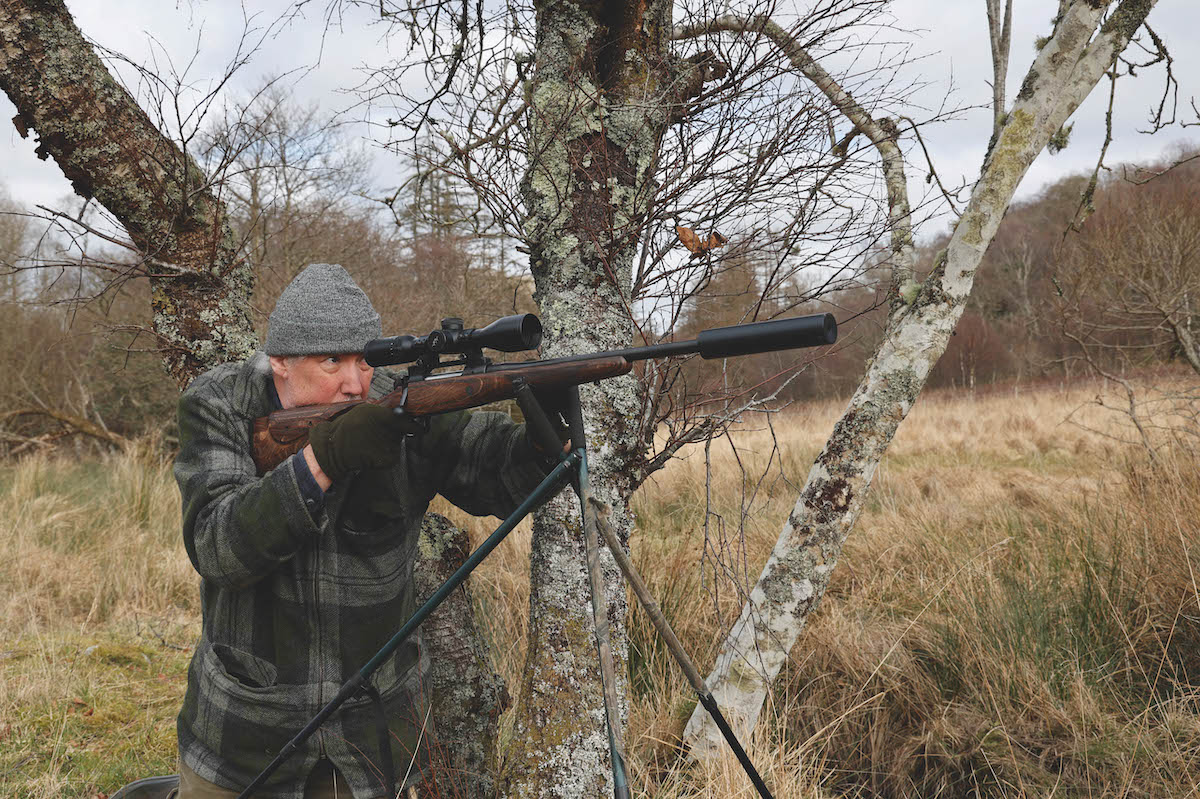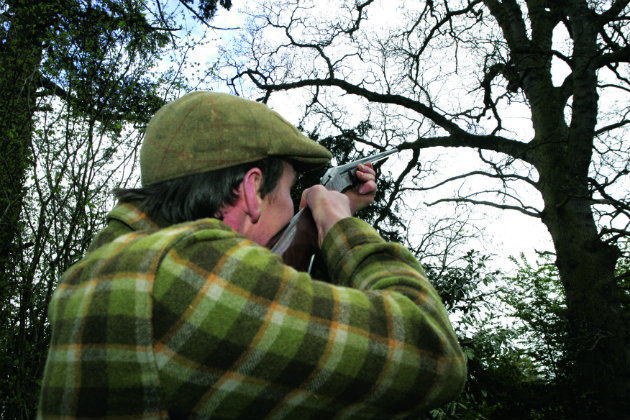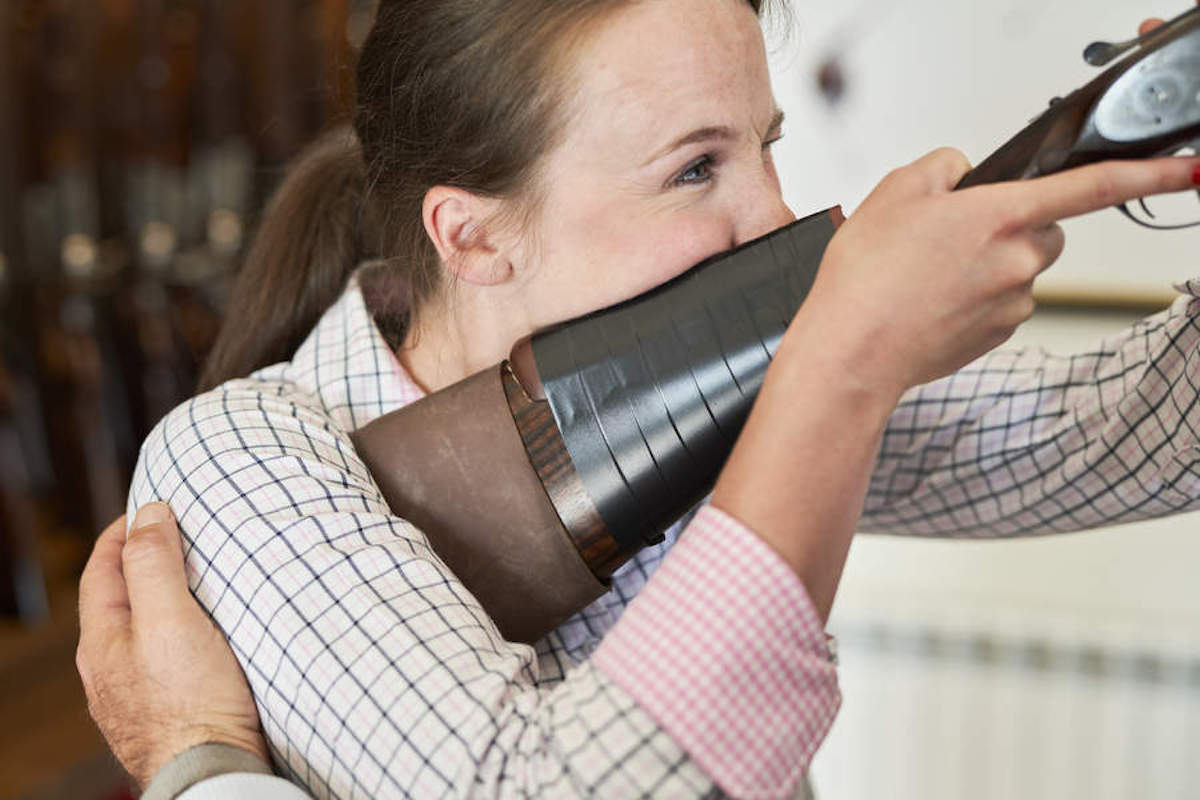The right kit for a succesful day’s rough shooting
Nick Ridley advises on what you'll need to have a comfortable and successful day out in the field

Walked up game tends to present a closer target
It would be fair to say that I am pretty well addicted to my walked-up shooting.
Years ago, walked-up or rough shooting was the mainstay of many a Gun and I know for plenty of people it was how they were introduced to the world of shooting. Then along came driven shooting, which proved more accessible to the masses; available and suitable ground got snapped up, small farms that would have traditionally hosted small informal walk-around days for family and friends joined ranks and turned into small driven DIY or farm shoots. As a consequence, trying to find ground to rough shoot became harder and harder. Fortunately, over the past few years there has been a move back towards traditional small-bag walked-up days, where the head of game is secondary to having a good day with your mates and dogs.

A cartridge belt can be worn under or over a coat
What’s the right kit for rough shooting?
Last week I was watching a YouTube video entitled ‘Pheasant Shooting Essential Equipment’ where the presenter was showing the kit he takes on a driven shoot. This included a leather gun slip (double), a matching pair of guns, tweed breeks, waistcoat and coat, socks, shooting stick, cartridge bag, eye and ear protection, gloves, leather-lined wellington boots, and even a handwarmer. This got me thinking about my shooting kit and how my needs are so very different from those of the driven shooter. Over the years, I have tried and tested many items of clothing, boots and guns and this past season I felt that I had just about got it right.

Gun weight is an important consideration
A gun for rough shooting
The two essentials if you are participating in any kind of walked-up shooting are a gun and cartridges. I used to always shoot with a 12-bore over-and-under; I got on OK with it but after carrying it around for some five or six hours, I found it quite heavy and my arms would get rather tired. As a consequence, I would miss some of the few chances that presented themselves.
I changed to a 20-bore Silver Pigeon but, being a traditionalist at heart, a few years ago I bought a £400 AYA No4 side-by-side. Now, the one thing you do not want when you are involved in walked-up shooting
is an expensive gun. It may not be such
a problem if you are walking across acres of sugar beet, but the real fun is when you are walking through open woodland and snap shooting in between trees and bushes that seem to spring out in front of you just as
a bird takes to the air. The last thing you want to do is to scratch or dent a piece
of top grade wood.
Barrel length is something else that should be taken into consideration. A couple of my friends who do a lot of driven shooting have guns that boast 32in or 34in barrels but my AYA’s come in at 25in and consequently, it is very quick to mount. I think the correct term is that the gun is “fast”. I am not exactly sure what that means but I do know that the combination of the gun being light with short barrels means that I can carry it all day and it is suited to snap shooting.
Choke
Another factor when considering a gun for walked-up shooting is the choke. Most guns used for high bird driven days will have quite a tight choke, so the shot pattern holds for as long as possible. But when shooting walked-up game, which tends to present a closer target, I have found that it is better to have a more open choke, so that the shot spreads quicker. On more than one occasion, I have had a clean miss of a flushing pheasant; I am sure that was because I had to take a quick shot and the pattern did not have time to spread fully and went straight past the target.
I have learnt a few things over the past 30 years that have helped me shoot more consistently. First, I will only use fibre wads, as I am very keen to keep the environmental impact of my shooting as low as possible.
Ready for anything
Unlike a driven day, where you will have a good idea of what your quarry will be, on a walked-up or rough day you have to be ready for anything that gives you the chance of a shot. One minute you could be hunting an overgrown ditch, the next a bracken-filled woodland where a sneaky cock pheasant may present itself or maybe a flighty pigeon darting in between the treetops. As a consequence shot size is a bit of a compromise. I have settled on using No.5 shot in a 25g cartridge; I find that though my quarry is shot at closer range, I need the killing weight of the slightly larger shot to get through obstructions such as tree branches or, if I am shooting rabbits, clumps of rough grass. It is surprising how many opportunities for a shot will present themselves just as you have a tree or a high clump of bramble right in front of you. Provided the shot is safe, I will always pull the trigger. I have been surprised on more than one occasion when despite having to shoot around or through an obstacle, my target tumbles to the ground.
You will need something in which to carry your shells and unless you have a real red-letter day, you will not need hundreds of cartridges; a couple of boxes should see you through most days. I prefer to wear a cartridge belt as I can put this under or over my coat, depending on the weather.
Tips to make you better at walked-up pheasant shooting
Have you been invited walked-up pheasant shooting for the first time? If so, congratulations because it’s a sought-after invitation. However…
If we are shooting during September when the weather can be warm, I normally wear a shooting vest and if we are backward and forward to the vehicles, I will put my cartridges in the front pockets. All this may seem like common sense but over the years I have learnt that when you are walking for 10 miles a day over varied terrain carrying a gun and various other items of necessity, it pays to be as comfortable as possible and pick the right kit for rough shooting .









